This week’s Calgary Through the Eyes of Writers blogs about Deadly Fall, with a hilarious picture of sculpture in Ramsay that looks like a falling church. Hilarious. How have I missed seeing this art? I’ll look out for it on my next walk through Ramsay.
Monthly Archives: January 2016
February is Psychiatry Month
Two-three years ago I read eight books on modern psychology as research for my novel, To Catch a Fox. I posted reviews of the books on my blog and now hate to see all that effort lost in cyberspace. Since the Government of Canada has established February as Psychology Month, I’ve decided to re-run my posts through the month, with the odd updated tweak here and there. I’m finding it interesting to revisit the messages in these books. Here’s the first of the rebooted series:
I began my readings about modern psychology/psychiatry with Psychiatry: A Very Short Introduction by Tom Burns (Oxford Press 2006). The book is short, to the point and provides a good overview for not too much reading effort.
Burns’ introduction spoke to me when he remarked on the current preference to say that psychiatry is “just another branch of medicine.” The goal, he notes, is to raise the status of the profession and reduce the stigma of mental illness. The problem is, psychiatry is different. There are real differences between mental and physical illnesses that won’t go away simply because we want them to.
In Chapter One ‘What is Psychiatry?’ Burns points out that psyche is the Greek word for mind (It’s also the Greek word for ‘soul’ or ‘breath of life’).

While the ancients pondered psychology (human thought and behaviour), the profession of psychiatry developed in the late 19th century with Sigmund Freud’s treatment of neurotic disorders, which he believed were caused by repressed unconsious thoughts.
Freud’s theories contributed much to twentieth century thinking — we still use the term Freudian slip, but his method of psychoanalysis has become increasingly marginalized in modern psychiatric practice. Today’s approach favours quicker and cheaper therapies that work at changing behaviours, with no need to understand underlying issues. Cognitive Therapy, with it’s goal of changing thinking, falls between behavioural and psycho therapy and has become one of the most successful and widely practiced therapies today. For better or worse, many turn to the self-help movement, a modern outgrowth of psychotherapy. Drugs are the cornerstone of treatment for psychotic illnesses, the primary ones being schizophrenia and biopolar disorder.
What’s the difference between neurotic and psychotic? The latter involves a loss of insight into the personal origins of one’s strange experiences; an inability to reality check.
As I learned on the Internet, the the newer drugs developed to treat neurotic disorders like depression aren’t more effective than the older ones. They work better because their fewer side effects make people less inclined to discontinue them. The newer drugs are more expensive to develop and produce. Some critics claim this encourages pharmaceutical companies to push agendas to redefine conditions we once viewed as normal as an illness. While it is good to recognize certain conditions, Burns observes that the DSM (Diagnostic and Statistical Manual of Mental Disorders) definition of Oppositional Defiant Disorder sounds a lot like difficult teenager.
His book reminded me of the anti-psychiatry movement that was popular on college campuses in the 1960s and 70s. I never got past the title of Thomas Szasz’ book The Myth of Mental Illness, but discussed his message that the schizophrenia is just a different take on the world. Szasz, R.D.Laing and others battered the psychiatry profession during these decades and their views carry forward with the Scientologists. Burns suggests, in general, there is less opposition to the concept of psychology and psychiatry today, possibly due to an exaggerated faith in biological explanations.
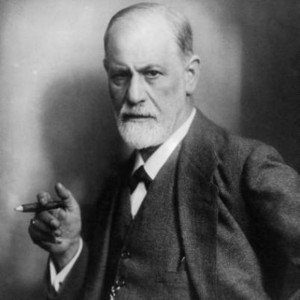
The nature vs. nurture debate is inherent in psychiatry. Freud’s theories and approach shifted the focus to nurture, even though he believed that medicines would ultimately be the cure. The nurture view prevailed from the 1940s to 1970s. The upside of nurture is the possibility of cure; the downside is blame, especially to parents.
Why do parents blame themselves? Because we need to believe we have influence to invest all that time in child raising. It’s evolutionary.
The conclusion of Burns’ book brings us back to the start: the mind is not the same as the brain. Psychiatry isn’t just another branch of medicine. When people can choose, they usually want a mixture of medicine and therapy.
Mental illness is still defined by its impact on the person’s sense of self and on his or her closest relationships. As Freud put it, his goal was to enable people to work and love.
Water and Waves
When I saw this picture on Calgary Through the Eyes of Writers I thought it was waves on a Mexican beach. Turns out it’s ice on the Bow River.
Research Time
After I finished my NaNoWriMo writing project in November, I felt a need to update myself on mental health treatment, which is a topic of both the NaNo memoir and the novel manuscript I completed earlier this fall. Like most of us these days, I turned first to the Internet. 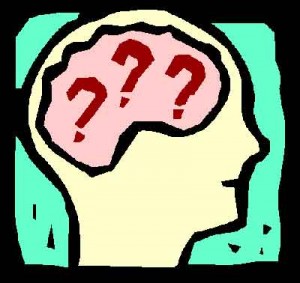
I found pages of stats:
One in five Canadians has a lifetime chance of mental illness, according to The Mood Disorders Society of Canada. 10.4 % of Canadians has a mental illness at any given time. This jibes with statements that one in ten Americans are taking antidepressants, the most prescribed medication in the USA. World-wide, depression is the leading cause of disability. The statistics go on and are, well, depressing.
I found information that surprised me:
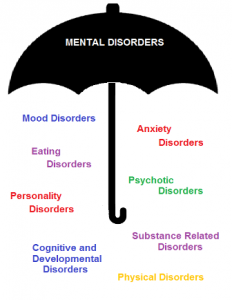
Today’s antidepressants are no more effective than their counterparts in the 1970s, despite the billions spent on research and development during the past forty years. The newer drugs simply have fewer side effects, which makes people more inclined to continue taking them. Drug treatment is still hit and miss. No one really knows why antidepressants work. Many question if they work at all. A 2011 study published in the Journal of the American Medical Association found that, while meds appear to benefit severe depression (about 1/3 of cases), for mild to moderate depression they are no more effective than placebos.
Evidence suggests that some kinds of therapy, notably Cognitive Therapy, work better than medication, especially for preventing relapse. Therapy combined with medication works best.
The rate of relapse for severe depression is 50-90 percent, depending on which website you read, with a lifetime average of four episodes per person. This is far, far from a cure.
Scans show that depressed brains look different than normal ones. It’s unknown if this altered brain chemistry causes depression or is an effect of it.
Is mental illness caused by biological, psychological, environmental or other facters, or a combination of these? The debate continues.
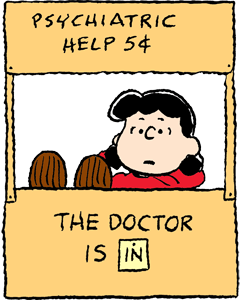
This preliminary research made me want to dig deeper, so I went to my library website and put holds on books about psychology and psychiatry that seemed relevant. Notices quickly appeared in my email inbox and I’ve now read five books, with more to come. Most of these books took me through the history of psychiatric treatment, which has been with us for less than two hundred years. They also provided different opinions on current treatments. Extremely different opinions in some cases.
To help me wrap my head around these readings, my next blogging project will be weekly reviews of these books. Tune in next week for my take on: Psychiatry: A Very Short Introduction by Tom Burns.
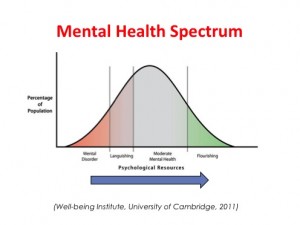
Diversity
Since I moved to Calgary almost 20 years, the city has become much more ethnically diverse. This is reflected by newer Calgary writers, notably Anita Rau Badami.
Opal POV
I’m honoured to be the featured writer in this month’s issue of Opal POV, an E-zine launched this summer by Calgary writer and publisher Cindy DeJager.
In addition to interviews, articles and flash fiction, Opal POV features regular columns by Calgary writer Catherine Saykaly-Stevens on social media (this month her topic is Password Protection) and author, former police officer and paramedic Dwayne Clayden on what TV and movies get wrong in police and medical shows. You can subscribe to Opal POV E-Zine for free.
If, like me, you have problems reading the flip E-zine format, the publisher has added a DOWNLOAD PDF button just below the flip-zine on this page.
Enjoy!
Boom & Bust
It’s interesting to feel the mood of Calgary in the late 1970s during this current mood of ‘bust’, if we dare use this dreaded b-word. On the plus side, my city taxes are lower this year.
Literary Map of Canada
Here’s a fun start to the new year – a literary map of Canada, 1936. Calgary is called Calgary Station and the map is full of rustic Canadian images. I confess I hadn’t heard of the four Calgary writers. I also hadn’t heard of most of the Canadian ones either. Such is the lasting fame of most writers.
Happy New Year
 NaNoWriMo got me interested in tracking my writing activity stats. For Christmas, I received a present that is doing this for physical activity – a fitbit that tracks my daily footsteps.
NaNoWriMo got me interested in tracking my writing activity stats. For Christmas, I received a present that is doing this for physical activity – a fitbit that tracks my daily footsteps.
So far — that, is for six days — my fitbit has encouraged me to walk or jog on the spot when I’d normally be sitting or standing. I have to say this jogging has sometimes been distracting for my family.
Periodically, through the day, I log onto my fitbit computer site and ‘synch’ the steps I’ve walked since I clipped the small device onto my shirt or pants that morning. The site displays graphs that show how close I am to my daily goal of 10,000 steps, the calories needed to lose a pound a week and my minutes of activity, which still seem small compared to my sedentary hours. The dashboard also rates activities by intensity. My basic walking around the house has been low intensity, a quick walk through a grocery store and one riser stair-stepping were medium and on-the-spot jogging was high. Stair-stepping feels a bit more intense to me than spot jogging, so this might not be completely accurate. While I’ve usually reached my goal for daily steps, my calories burned have yet to hit the mark. It seems to lose my holiday weight I’ll need to increase the minutes of intensity and/or numbers of steps. This might happen, at least some days, when I restart gym classes and do longer walks in the new year.
This fitbit has been fun. I hope I keep going with it and, for once, keep my ususal New Year’s Resolution to exercise more. And one of these days I’ll have to stop eating those chocolates and cookies.
Best wishes to you for your 2016 resolutions and dreams.